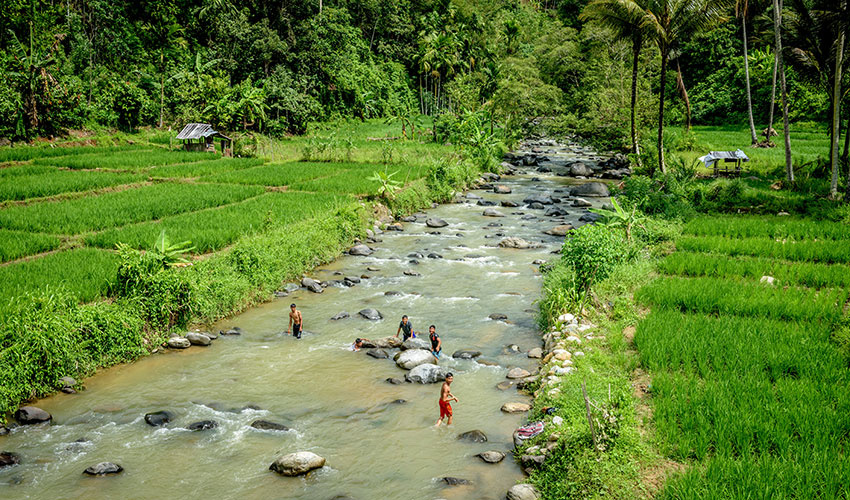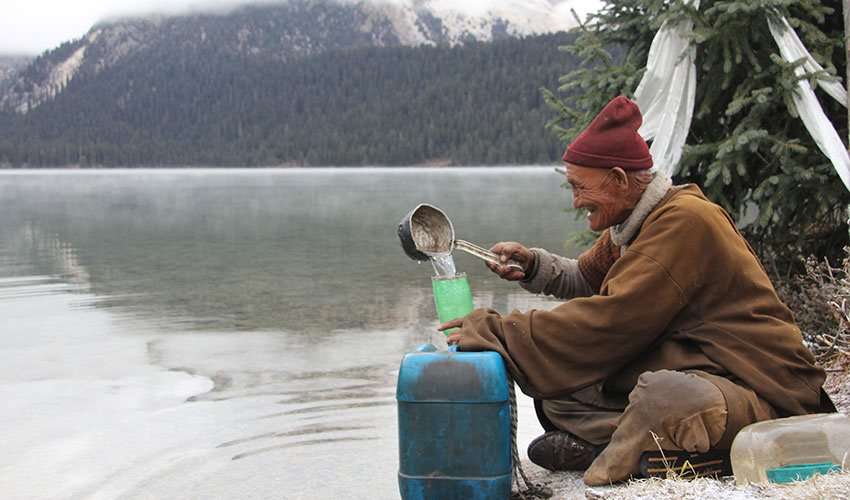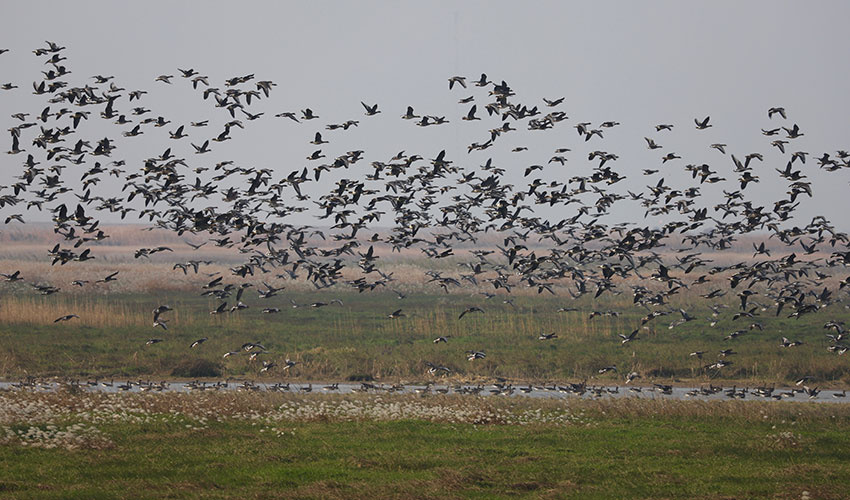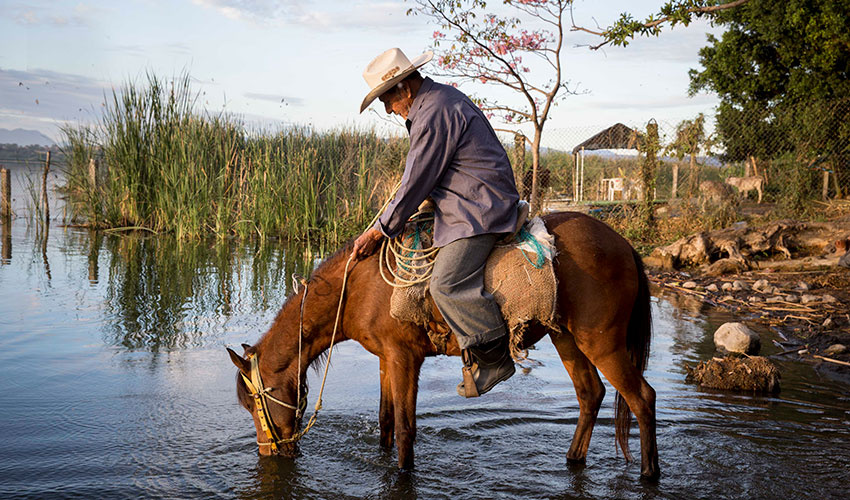Why the global water crisis needs local solutions
Water security is under threat as competing socio-economic and environmental priorities make sustainably managing this finite resource difficult. Some suggest applying the global principles of climate change mitigation, but volumetric targets or offsets ignore the regional factors that drive the water crisis. Instead solutions must be local and account for the ecology of individual watersheds and how communities use resources, write Dr Derek Vollmer and Dr Ian Harrison of Conservation International, an IUCN Member organisation.

Children play in the Aek Mais River which flows from the Batang Gadis watershed in North Sumatra, Indonesia.
Photo: © Conservation International, Tory Read
On 2 February we celebrate World Wetlands Day and the enormous benefits that wetlands supply to humans and to a huge spectrum of biodiversity. An objective of the Day is to draw attention to the inseparable nature of water, wetlands, and life; the water we use is indivisibly linked with the watersheds, ecosystems, and aquifers that determine where it flows. Other factors include the complex mix of public and private uses of water, which are sometimes in competition with each other, and frequently in competition with the ecological needs of water to support ecosystems. These complexities make water extremely difficult to manage sustainably and so World Wetlands Day also draws attention to the growing water crisis, to which we must respond.
World Wetlands Day highlights the close link between climate change and water insecurity; climate change exacerbates the water crisis. Recently there have been tendencies to treat this global water crisis as somewhat comparable to climate change. It is true that climate change and water insecurity are two of the most important environmental crises the world faces. The former is recognised through the Paris Agreement but there is no global agreement on water beyond some targets within the Sustainable Development Goals, and Goal Six in particular. We need to elevate the importance of the global water crisis and marshal commensurate actions, but in a recent paper we warn against simply taking core concepts used to frame climate change mitigation and applying them to water security issues.
We warn against simply taking core concepts used to frame climate change mitigation and applying them to water security issues. The water crisis is more complex.
The climate crisis can be addressed by the single goal of limiting global warming to 1.5°C, as per the Paris Agreement, and a reduction of emissions to address this confers benefits everywhere. The water crisis is more complex. It encompasses a multiplicity of regional and local crises driven by unique characteristics. Water is unequally distributed such that different regions can have profoundly different problems, with too much or too little water at different times of year. The responses to these challenges will be significantly different.
We concur with Dr Rebecca Flitcroft, Research Fish Biologist for the US Forest Service and Co-Chair of the IUCN World Commission on Protected Areas’ Freshwater Specialist Group, and her colleagues in their statement that there is “no standard template for catchment management that works well everywhere”. Instead our solutions to the water crisis must be place-based and account for the ecological characteristics of individual watersheds, and the ways in which local communities use these resources.
Our solutions to the water crisis must be place-based and account for the ecological characteristics of individual watersheds, and the ways in which local communities use these resources.
To achieve this, we must consider more than the most easily measurable aspects of water management such as water quantity or quality. We must work across traditional silos of water management (water use and governance, riparian landscape management, ecological conservation etc.) and bring these components of water management together in our solutions.
“We are at an important time in terms of high-level policies for biodiversity and sustainable development with the Post-2020 Global Biodiversity Framework in development and the Sustainable Development Goals under review. This study makes an important point, that the conservation and management of freshwater ecosystems must address and integrate local ecological interests with diverse social and economic issues of resource use.” said Razan Al Mubarak, Managing Director of the Mohamed bin Zayed Species Conservation Fund and a candidate for IUCN President.
 A Tibetan man collects drinking water from the sacred Cuopu Lake in the Batang area of Haizishan.
Photo: © Conservation International, Nan Yang
A Tibetan man collects drinking water from the sacred Cuopu Lake in the Batang area of Haizishan.
Photo: © Conservation International, Nan Yang
Our research has found examples of top-down approaches that are suitable for climate change mitigation but are inappropriate and possibly counterproductive for water. For example, a planetary boundary for water may have helped draw attention to the global water crisis over a decade ago, but it vastly oversimplifies water security. Setting a limit on global human use of water does not address the multiple other complexities of the water crisis, nor does it make sense given the unequal distribution of water around the world.
Similarly, water footprint assessments and water offsets (or corporate “replenishment” targets) tend to oversimplify the complexities of freshwater ecosystems, and fail to account for the diversities of local impacts, livelihoods, and stakeholder needs. These approaches often focus on balancing water volumes, or interchange the value of water as a physical resource with the diverse other benefits supplied by freshwater ecosystems and the associated costs of restoring these not equivalent commodities. The application of such top-down approaches may bias actions towards presumed ‘solutions’ that are not well-suited to needs on the ground like investments in improved water access, training for climate change adaptation, or strengthening water governance.
More attention should be paid to freshwater ecosystem health and the role that maintaining or restoring healthy watersheds has in achieving water security.
As many IUCN Members will agree, more attention should be paid to freshwater ecosystem health and the role that maintaining or restoring healthy watersheds has in achieving water security. Echoing his previous comments, Dr James Dalton, Director of the IUCN Global Water Programme, said: “We need to rethink how we sustainably manage our freshwater resources for the benefit of those people who are most directly connected to them. Our policy and management must address the realities of working successfully on the ground.”
 Tundra bean geese (Anser serrirostris) gather at Poyang Lake in China’s Jiangxi Province.
Photo: © O. Langrand
Tundra bean geese (Anser serrirostris) gather at Poyang Lake in China’s Jiangxi Province.
Photo: © O. Langrand
At Conservation International (CI) we are putting these ideas into practice in places such as China’s Poyang Lake basin, which is home to two Wetlands of International Importance (Ramsar Sites) but also supports the economic activity of more than 45 million people. Supported by Sateri, a leader in viscose chemical fibre production with large operations near the lake, CI is working with provincial government agencies and universities to conduct the first-ever Freshwater Health Index assessment for the basin. This work is helping identify local priorities for protection and restoration and has also highlighted the importance of community-based conservation of areas important for migratory birds.
The stronger focus on bottom-up solutions, accounting for local and regional water issues, allows for better adaptive management in response to new information and changing conditions. This will be particularly important as countries have to incorporate more flexibility into their water management to deal with the less predictable outcomes of climate change. Dr John Matthews, Executive Director of the Alliance for Global Water Adaptation, said: “It is very interesting to see this study, comparing the approaches between climate and water security. While noting the differences, it also concludes with an approach that is in line with the process of ‘decision-scaling’ that we apply to climate adaptation.” Decision-scaling looks at climatic and environmental data in the context of stakeholder-defined needs. The process is bottom-up, driven by stakeholders like planners, engineers, and conservation practitioners. “I look forward to seeing the authors’ recommendations taken further.” Dr Matthews added.
Providing more support and investment to local stakeholders will allow them to make the right, local decisions for the tradeoffs necessary to achieve economic development within ecological limits.
Another message of World Wetlands Day is that a solution to our water insecurity will be to better “integrate water and wetlands into development plans and resource management”. But, as noted by Dr Dalton: “Finance has been a limiting factor on achieving and reporting on Integrated Water Resource Management progress. The sources of the finances we need to achieve this are worryingly absent in any discussion on water and our Sustainable Development Goals.”
 A rider lets his horse drink from Coatetelco Lake in Mexico
Photo: © Conservation International, Jessica Scranton
A rider lets his horse drink from Coatetelco Lake in Mexico
Photo: © Conservation International, Jessica Scranton
We conclude that rather than encouraging the private sector to invest in offsets for their water impact, or for international organisations to rally around volumetric targets, it would be better to provide more support and investment to local stakeholders to help them understand the ecological limits of their basins and manage their water resources properly. This is something all IUCN Members can help implement and will allow stakeholders to make the right, local decisions for the tradeoffs necessary to achieve economic development within ecological limits.
Derek Vollmer
Languages
- English
- Français
- Español
- العربية
- Nederlands
- Deutsch
- Italiano
- ภาษาไทย
- Tiếng Việt
- Cambodian
- 简体中文
- 繁體中文
- Bahasa Indonesia
- 日本語
- Laothian
- Portuguese
- Русский
- اردو
Very helpful
Very helpful blog. We have to save the water for overcome to this problem. This is a big issue. So many urban areas are suffering fro this. We have to work for them.




Comments